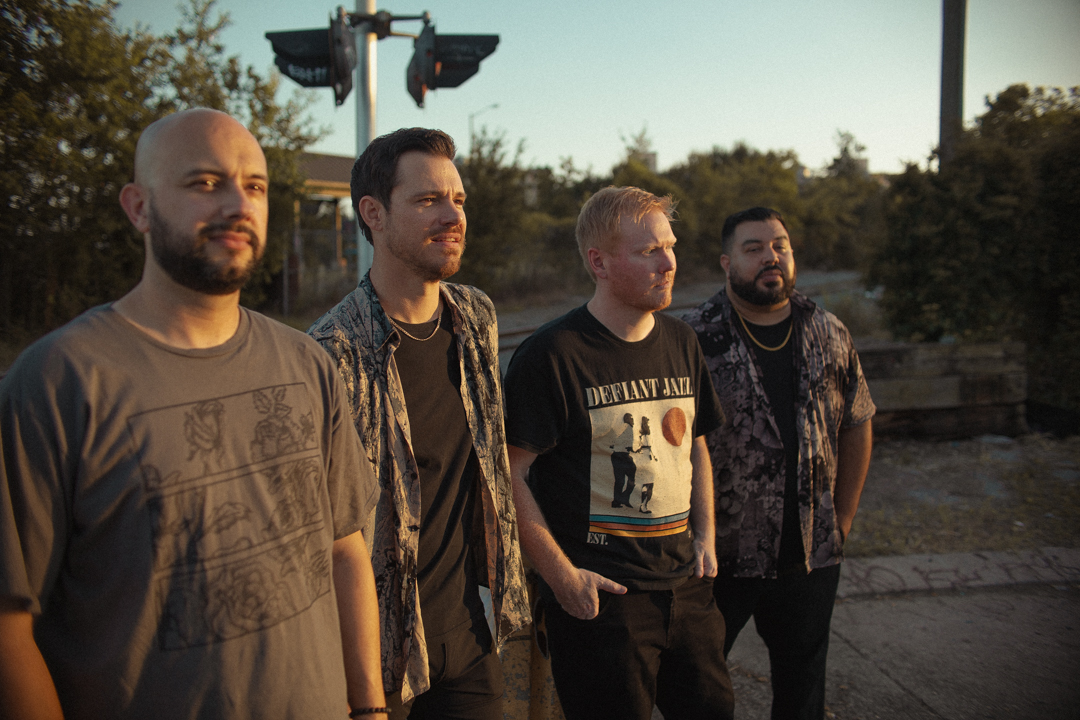Now Hear This is a monthly A&R column that provides you with exciting new sounds we discovered through the innovative new music platform Groover.
Each month, you can expect a varied bouillabaisse of songs from a vast spectrum of artists from all over the globe, regardless of genre or geography.
In October, we hope to introduce you to an impressive and wide-ranging array of talented acts from the worlds of jazz (Mo’JAZZ), psych-pop (Baby and the Beats), dream pop (Bernardo), hip-hop (Julian Winter feat. Tommy Danger and Leisure-B), emo (Safety Training), metal (The Higher Desires) and good, old fashioned workingman’s rock (Ethan Pacheco) along with those who forge their own distinctive territories (Friendship Commanders, Soft Cuff, Lucian Moriyama) and more.
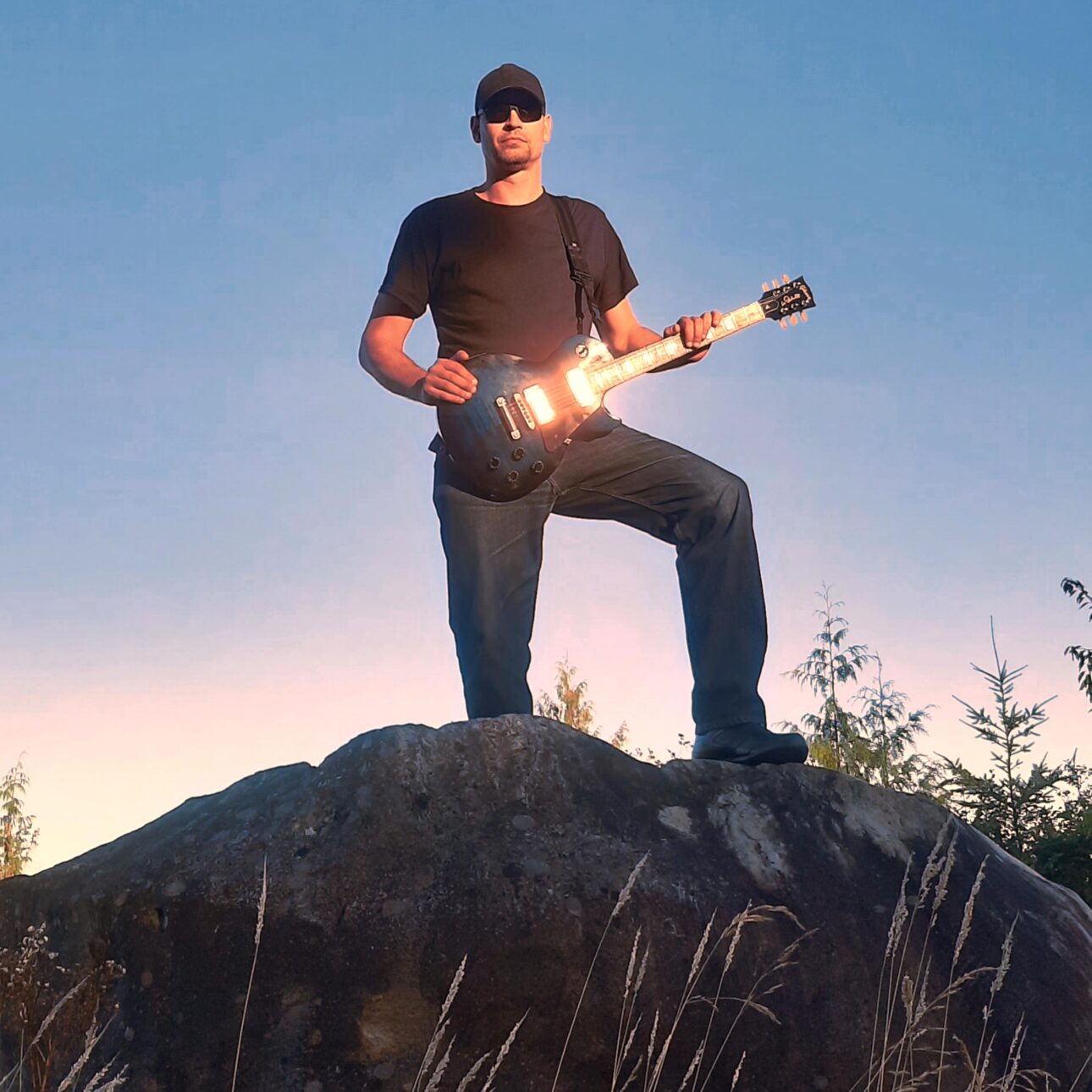
The Higher Desires
Sounds like: The alt-metal groove and hip-hop cadence of this song really reminds me of the Helmet/House of Pain collab “Just Another Victim” from the Judgment Night soundtrack, albeit with a baseball-themed slant.
Interview:
Describe your approach to music and how you would explain your sound to others.
I aim to create a unique, original sound while building on what’s familiar to the ear. But I always want to stay creatively free rather than chase whatever is “similar to” #1.
My sound is a multi-genre mix with each song telling its own story or setting its own mood. Even with just the first four releases, I think you can already hear the range. I’ve played in bands spanning jazz, classic rock, hard rock, and thrash metal, and I’ve written for other artists — so influences naturally cross over. You’ll hear hip-hop style cadences in my lyrics, but also guitar, bass, and drums rooted in grunge and heavy rock. I know genre-purists can find that challenging, but for me it’s essential; I can’t stay in one box for long.
For example, my most recent song, “The Children,” came from deep personal loss after my mom passed away and concern for family in Ukraine. I initially sat down to write something dark and heavy but prayed for guidance and felt led to create a song of peace instead. I wrote, performed, mixed, mastered, and released it in one month with a sense of urgency. “Unknown Soldiers (Veterans Edition)” followed with the same mindset — a tribute to veterans with my former college guitar teacher, Michael Stoican, generously performing the lead guitar parts.
Each track takes you somewhere new. That’s what excites me — blending authenticity, musicianship, and emotional honesty to create something familiar yet different.
How did you come up with the name of your act?
There’s an interesting backstory to that. When I first started writing songs for myself after years of playing bass and drums in other bands, I wrote a track called “Higher Desires” in 2011. It captured the feeling I wanted my music to give to the listener — that rush of endorphins when a song really hits. The name stuck because it’s about creating music that uplifts and truly connects with people.
What are some artists and albums that have informed your creative direction?
Growing up in Seattle, the grunge movement shaped me — Nirvana, Pearl Jam, Soundgarden, Alice in Chains — but I’ve also always had one foot in hard rock and metal with bands like Tool, Pantera, Megadeth and the Scorpions. I studied drummers from Led Zeppelin and Rush, learning how creative energy can drive a song. Hip-hop runs deep in my veins as well — Beastie Boys, Run DMC, Sir Mix-A-Lot — that rhythm shows up in my vocal cadences. I built large stereo systems back in the day and all these artists really rocked my car with a lot of flavor. I loved loud music growing up. One of my favorite artists is Jimi Hendrix. I loved his raw and fearless performances. And many other classic influences like the Beatles, Rolling Stones, Santana, Eagles, Stevie Ray Vaughan have all taught me how to build emotion into songs. My style is really a mashup of everything that has inspired me.
What’s the most exciting thing happening in music right now?
I think the most exciting thing is the ability to create music faster than ever before. The digital era lets independent artists produce and release music that in the past was available only to those with major record deals and big budgets. The tools available once you know about them and how to apply them to your work, is very impressive. What is also exciting is that now collaborations can happen across the world in real time. But with that comes an oversaturated market and algorithms that often bury new voices. It’s thrilling that anyone can create yet it’s still challenging getting heard and takes hustle, smart promotion and persistence. With an indie label, Def Garage Records, we hope to produce other artists and create professional studio-quality work that brings authentic music forward.
Where do you see the music world heading in the next five years?
I think the next five years will flood streaming platforms with a lot of AI-generated, unauthentic, soulless music. That’s why it’ll be harder, but more valuable, to stand out as a real human voice with something meaningful to say. Social media feels like a megaphone for those with the deepest pockets, so indie artists will need to build their own networks, push for grassroots support, and connect directly with listeners and curators who still care about human art over hype. For me and Def Garage Records, it’s about staying true to the message, making songs that last, and using every tool available without losing the human touch.
How is music helping you during these uncertain times?
Music is where I process the world. The Children came from watching how easily neighbors and friends, Ukrainians and Russians — once shared life, music, and family, but were torn apart when leaders used propaganda and AI-driven media to fuel hate and control thought. I saw that happening even before 2014 while visiting Ukraine’s Crimea, and it’s terrifying how fast the value of life erodes when people are taught that violence is an answer. Writing this song was my way of fighting back — turning grief and fear into something that calls for peace and reminds us to protect the next generation. Music helps me push against despair and try to leave something hopeful in a world that can change overnight.
The music video was built entirely from AI-generated clips, then carefully edited, sequenced, and layered together like a song — every cut, transition, and mood was shaped manually to tell the story. It was my way to use AI for the good of helping the message resonate. My goal was to use AI for good, to help the message resonate. None of the footage is real.
Someday, with the right producer — or if a track like I Know Right really takes off — we’d love to turn these ideas into a full cinematic story. For now, this DIY video is our way of proving what’s possible with heart, vision, and almost no budget.
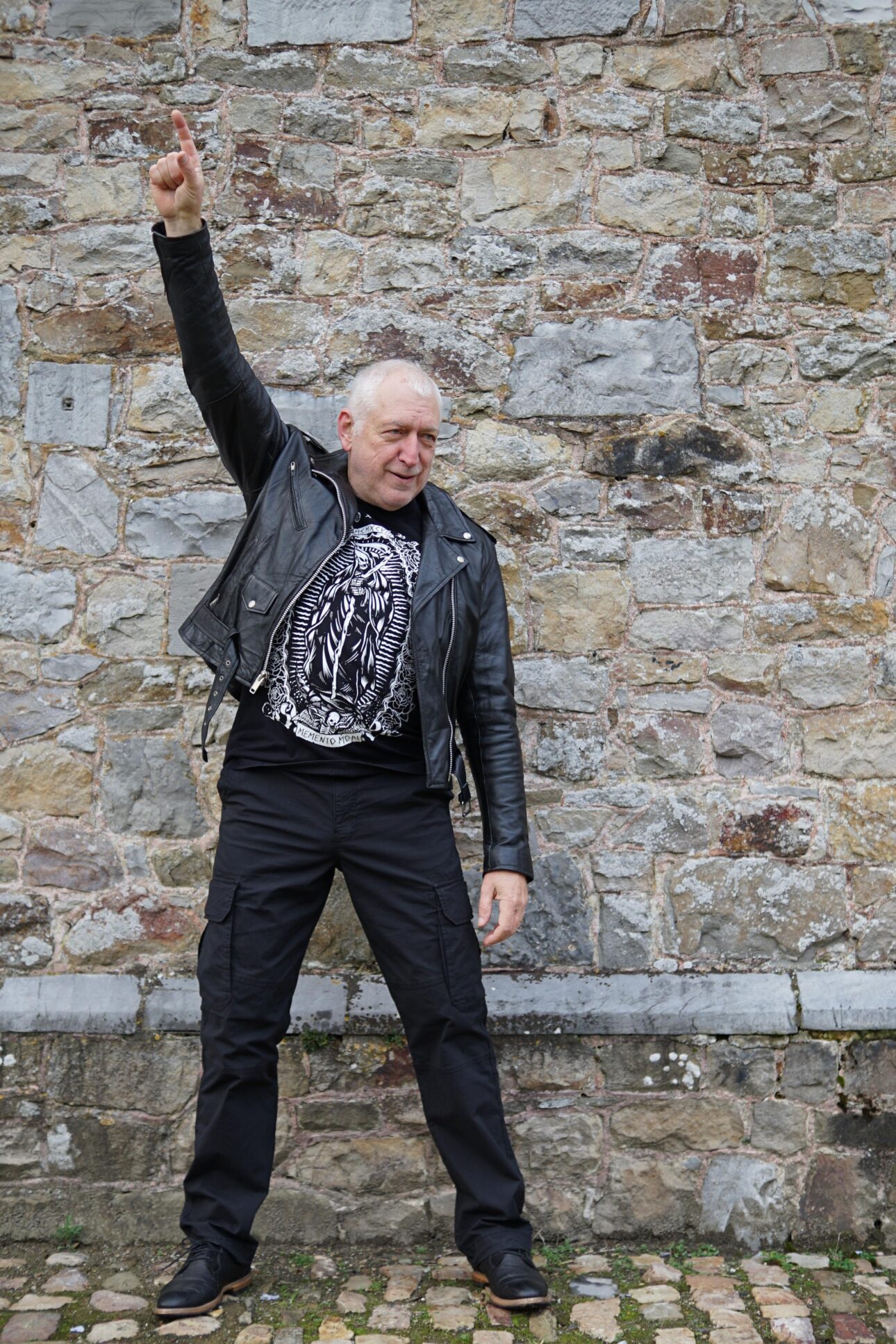

Baby and the Beats
Sounds like: This is some serious psychedelic pop straight out of a lost Nuggets style compilation. Like a Belgian Os Mutantes with a metal edge.
Interview:
Describe your approach to music and how you would explain your sound to others.
Our music is a mix of power, intensity, and melodic/atmospheric character. As such, our sound is based first on complementarity and vocal harmonies between the two singers, Cassandra and Patrick which alternate and/or complement each other. The second component is the guitar wall created first by powerful but also subtle riffs of Stefano, also complemented by Patrick’s chords and notes. The rhythm section is implementing the pulse offering the audience the typical sound of the band. In the studio, we have been working with drummer Serge Barbuti, well known in our hometown.
How did you come up with the name of your act?
Since the beginning, when Patrick created the first band (initially a pop/rock band), it was already the idea to have two singers, male and female, complementing each other. The name comes from this feminine presence and the fact that rhythms always played a leading role in the writing of both Patrick and Stefano. By the way you will soon discover our second single entitled “The beat”.
What are some artists and albums that have informed your creative direction?
We all come from different universes. Cassandra is a big fan of Elvis Presley for example. But as far as metal and hardcore are concerned, we can point out Evanescence, Marylin Manson, Lacuna Coil. For Stefano, it’s mainly metal music from the ‘80s with bands like Europe, Dokken, Dream Theater. Stefano studied music theory and as such is also a big fan of classical music and especially Bach. He’s also influenced (he’s from an Italian family) by Italian music, as far as melodies are concerned.
And finally, Patrick is first a fan of rock of the 70s with the classics Led Zeppelin, Deep Purple, Genesis, Pink Floyd and so on. In terms of metal music, his influences are bands like Rammstein, Linkin Park and Nightwish.
What’s the most exciting thing happening in music right now?
For Patrick, it’s without any doubt the rebirth of Linkin Park with the new singer Emily Armstrong entering the band.
Now generally speaking, exciting things are what we hear in metal and the evolution in audio mixing. For example, the powerful drum sounds and the guitar sounds. And the mix of electronic sounds like in Slipknot for example. Plug in technology for example has been a real revolution for people like us who auto produce their music.
Where do you see the music world heading in the next five years?
The music world is presently in danger. Artificial Intelligence is targeted by the music industry and streaming platforms as a potential replacement for real artists. We all know that a part of the music streamed today is already produced that way. We can just hope that real people will always be there to support other real people producing real music.
Now to be more optimistic, we hope to have a nice surprise. Whether it’s from the 70s to today, the evolution of the music scene has been astonishing and sometimes very original.
How is music helping you during these uncertain times?
Music is our way to express ourselves in a dangerous and uncertain world. As far as I’m concerned (Patrick speaking) my song writing has always been focused about the real world, with the goal, either to support people by providing encouragement and fun, or to denounce injustice and wrong doings. I’m afraid it has never been more necessary than today.
For all of us, music helps us enormously. It takes us back to our dreams and memories of those beautiful days when everything was simpler and above all more sincere.
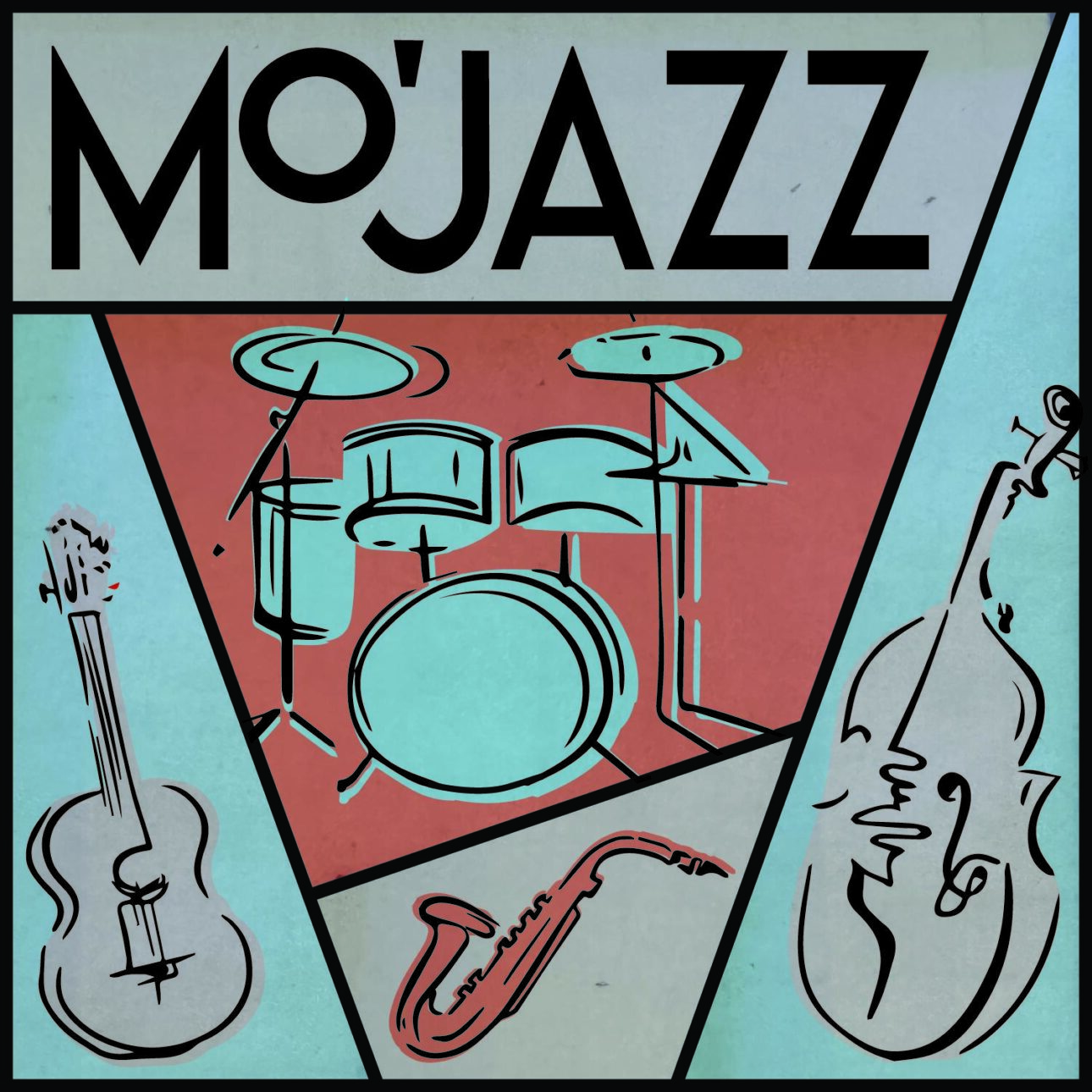

Mo’JAZZ
Sounds like: Top notch contemporary jazz players swinging like its post-WWII Kansas City.
Interview: (Answers by Michael Morrison)
Describe your approach to music and how you would explain your sound to others.
As a musician coming of age during the musical renaissance and cultural change of the 1960’s and 1970’s, I resist the idea that music should be categorized and divided into limiting, rigid genres. Celebrated Canadian classical pianist Glenn Gould passionately spoke against dividing music into historical periods or styles, preferring to focus on compositions as a seamless part of a larger musical fabric. Miles Davis, Thelonious Monk, John Coltrane, Herbie Hancock, and many other greats were always more interested in unifying musical ideas over division. As the legendary jazz composer, pianist, and bandleader Duke Ellington wisely stated: “It’s all music.” In our recently released first studio effort, Mo’JAZZ honors the “free jazz” approach of our heroes by performing swing, bebop, cool jazz, latin, blues, and pop, among other musical directions.
How did you come up with the name of your act?
Given my surname Morrison, it was not long before I got the nickname “Mo” in first grade! As I recall, we were playing street football and one of my older neighborhood friends started calling me Mo during the game. When he later started calling me Mo at our elementary school, the other kids loved it and it stuck for life! There’s swing jazz, bebop jazz, straight ahead jazz, Latin jazz…now comes Mo’JAZZ!
What are some artists and albums that have informed your creative direction?
In the late 1970’s, I had the privilege and honor of studying with the late great drummer and music educator Dave Palamar of the United States Air Force Band’s Airmen of Note (the Glenn Miller legacy group). During our first lesson, Dave lent me several of his favorite vinyl jazz albums that I had never heard before, including the epic Miles Davis live recording Four & More with a young Tony Williams on drums. Listening for the first time to what Miles called his Second Great Quintet and Tony’s creative percussive approach proved to be a life changing moment for this young drummer. During school days off, my parents would let me stay up to watch Buddy Rich, Ed Shaughnessy, Louie Bellson and other great drummers on The Tonight Show with Johnny Carson. There was always a lot of music in our family home while growing up: classical, rock, pop, jazz, country, folk, and more. My dad (a trumpet player in his high school band) and I always enjoyed listening to disc jockey Felix Grant’s decades-long running radio program “The Album Sound” on WMAL in Washington, D.C., and the tinkling piano of his theme song “Tenderly.” This award-winning radio program that first brought Brazilian music to the Nation’s capital helped introduce me to Blue Note Records, the Rudy Van Gelder sound and its cavalcade of jazz stars and iconic album covers, highly influencing my creative direction in jazz and aesthetic.
What’s the most exciting thing happening in music right now?
New and innovative technology continues to drive the action! Immersive Audio Albums and sound technologies like Dolby Atmos and Sony 360 Reality Audio have become more readily available via websites and streaming services, creating a three-dimensional palette for artists and engineers to craft geo-spatial musical experiences that truly feel immersive. Streaming services are moving beyond simple playlists based on genre to utilize advanced AI to create context-based playlists that can match a listener’s mood, activity, and location. Finally, new formats for live performances like interactive virtual holographic concerts continue to push the creative envelope and offer new and unique fan engagement.
Where do you see the music world heading in the next five years?
Genre fusion and fluidity will continue to experience robust growth as musicians blend styles from different regions, cultures, and eras to create new sounds, stories, and diverse ranges of music. New generative AI tools will become common for music production, from generating grooves to providing important feedback to recording artists while retaining the musician’s human decision making as the heart of the project and final creative voice. Online streaming services will continue to perfect algorithms that create playlists tailored to the listener’s unique personal tastes and listening history.
How is music helping you during these uncertain times?
I continue to view music as a form of holistic medicine for all times, a salve to help soothe life’s rough edges providing comfort, inspiration, a lasting sense of hope and joy, and spiritual and emotional nourishment. We know from musicology that the musical arts can heal and change the world since music can change humanity. Music will continue to evolve and provide hope for all in difficult and uncertain times while serving as a powerful creative tool for exchanging ideas, conveying emotions, and transcending barriers.
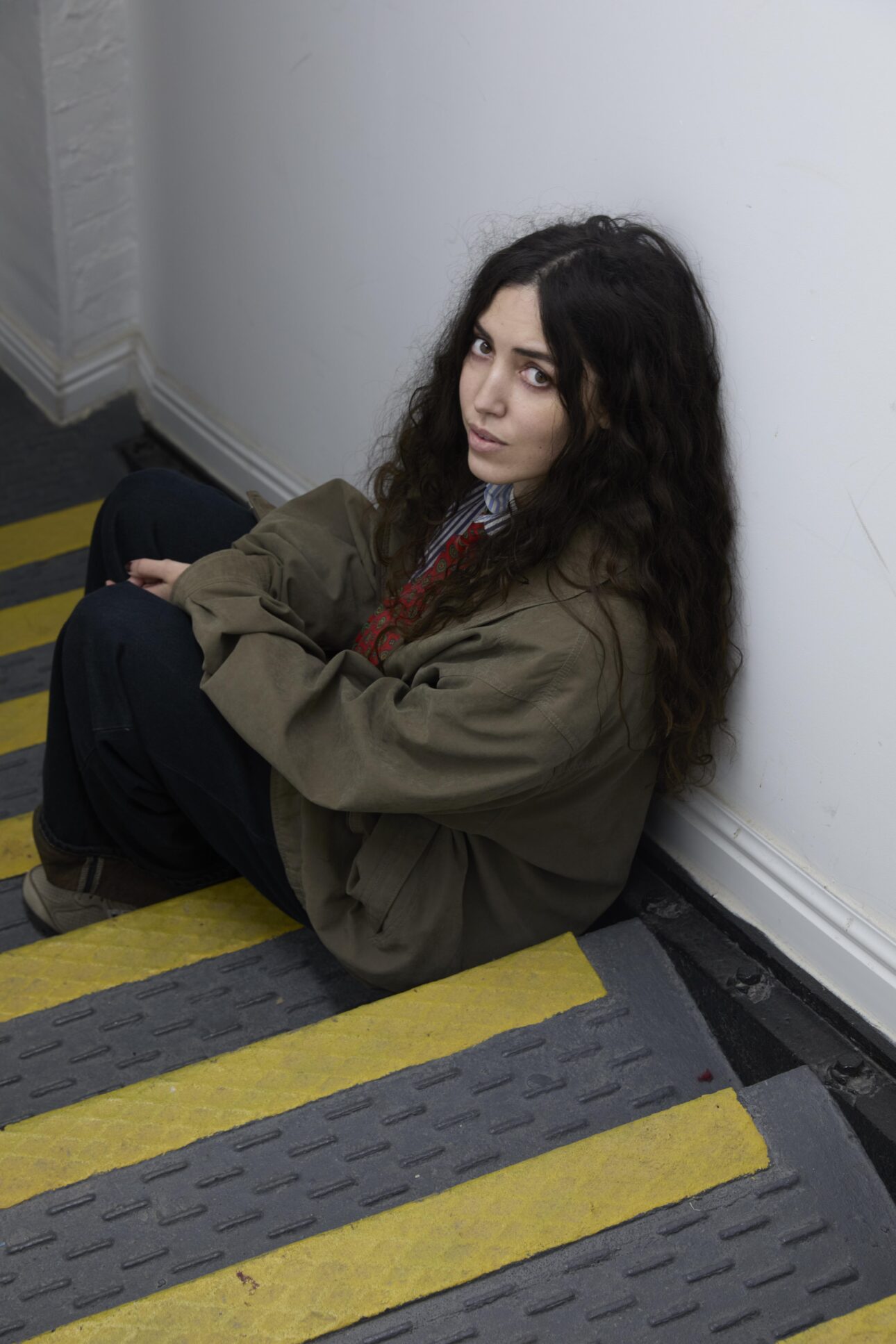

Bernardo
Sounds like: Futuristic, samba-infused dream pop co-produced by Django Django’s Dave Maclean and featuring Sean O’Hagan of The High Llamas on piano.
Interview:
Describe your approach to music and how you would explain your sound to others.
Not sure if I have an approach, I try to be moved by something. I follow the signs and just add and take as necessary — it’s more of a feeling. I am not sure what my sound is, it’s a mix of latin music with indie and folk and dreampop — I can’t really tell.
How did you come up with the name of your act?
Bernardo is my surname and at school kids used to call me Bernardo as it was a boys name and they thought it was perhaps funny — maybe they were making fun of me? But I really didn’t mind it and when I put out music for the first time I thought I’d do it under Bernardo, as a mask to hide behind. It was not a great choice for SEO as there are 100 artists named Bernardo and another 100 football players with the same name. But I am keeping it.
What are some artists and albums that have informed your creative direction?
It’s always so many! The Beta Band — all their records! — I have to say they are one of my favourite bands of all time and massively influential to me, The High Llamas of course, Antena – Camino Del Sol, Mariza’s Transparente, Nelly Furtado’s Whoa, Nelly!, Young Marble Giants’ Colossal Youth.
What’s the most exciting thing happening in music right now?
I think the letting go of music genres. Artists are really throwing themselves at all genres without concern and I think that’s incredible!
Where do you see the music world heading in the next five years?
I hope to see a change in how we all listen to music — I am not sure what that is. I just think the way we interact with music has become maybe too “shallow.” It’s all too available now and I think maybe people don’t have the patience to listen to a whole body of work. I also hope we can get paid — I am a new and a small artist still, so I have to have a full time job just to keep working on my art and attempt to have a life, but it would be great if I could one day live off my art – which most people have already told me is impossible — that’s a lot of what my album Secrets Of Six-Figure Women is about.
How is music helping you during these uncertain times?
I find music and I guess any art form to be a little cluster of magic assembled from God-knows-where and channeled by a person/group of people. And as such, it works almost like medicine in times like these. Not because it’s soothing (it can be at times) but because it’s a constant reminder that magic does exist and a reminder to stay hopeful. Music anchors me — I love listening to music, discovering new music, making my Dispatch playlists, sorting music for my radio show, making music, playing music — all of it! — makes me not go totally insane.
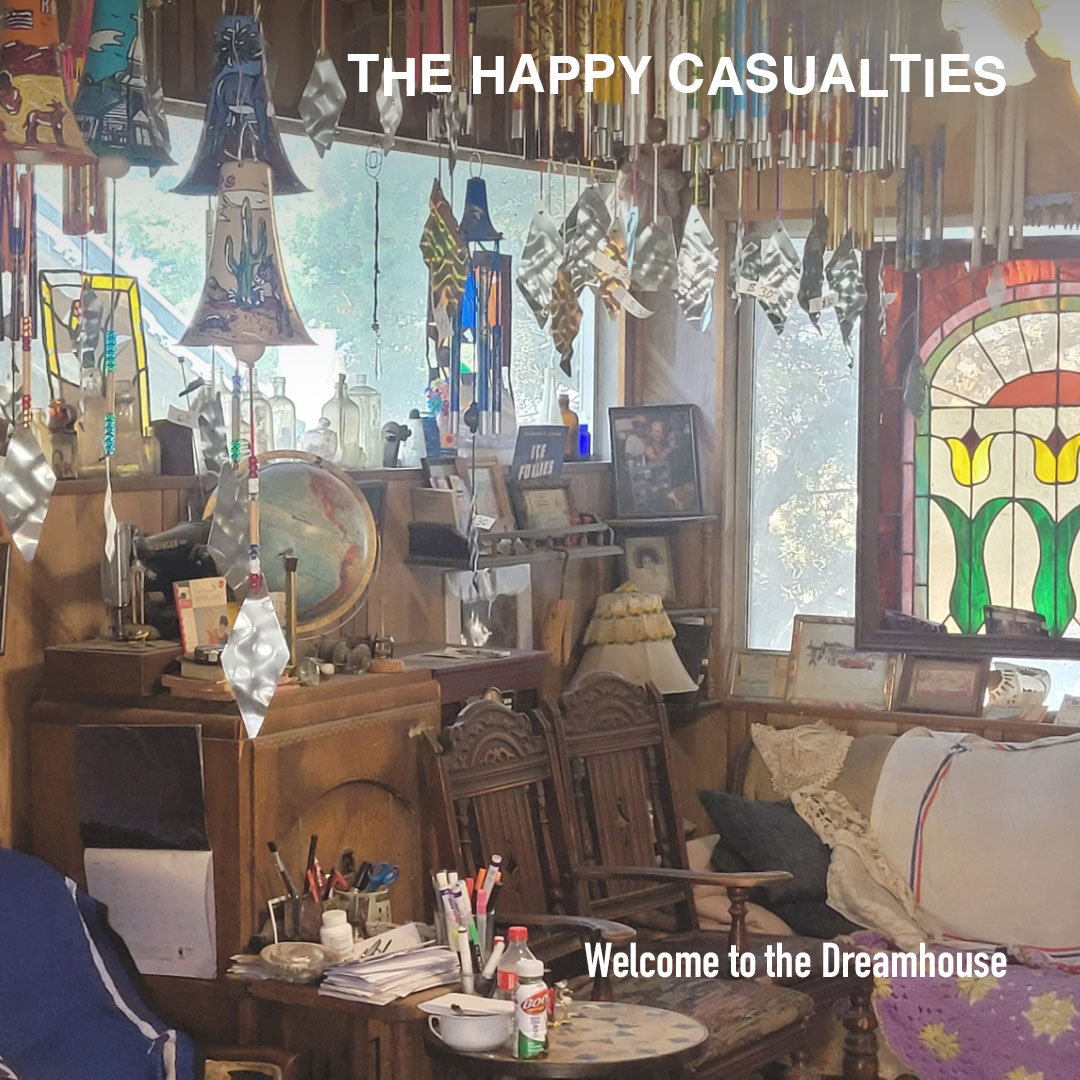

The Happy Casualties
Sounds like: Laid-back, front porch singing and songwriting with an existential message and undeniable sense of melody, as if Burt Bacharach was recast as a bedroom studio sensation.
Interview:
Describe your approach to music and how you would explain your sound to others.
My approach to music is song-based. I generally start with the title and then try to create a musical structure either on guitar or piano. Once I have something that’s compelling enough to keep working on, I look at scraps of paper where I’ve written down lyric ideas, then try to assemble the piece. Sometimes this fast, but usually it takes a few days. I don’t work consistently at it because it seems like a longer gestation process yields a better song.
I try to describe our sound as being “indie rock” and within that classification you can (or should be able to) put almost any styles or genres. The songwriters I feel have influenced me the most are: The Rolling Stones, American Music Club, Elliott Smith, Big Star and Sparklehorse; so I generally reference those artists as influences.
How did you come up with the name of your act?
I came up with the name, The Happy Casualties, when I was watching a video of Bill Hicks doing stand-up. He was talking about rock stars dying young and he said: “There have been casualties.” And I misheard it as “They’re Happy Casualties.”
What are some artists and albums that have informed your creative direction?
Some of my favorite albums are Exile on Main Street by the Stones, It’s a Wonderful Life by Sparklehorse, Gospel Morning by The Chamber Strings and Like Flies on Sherbert by Alex Chilton. Burt Bacharach’s songwriting has had a big influence on me as well. More contemporary artists, who I know and like what they’re doing are my friends, Shaun Brown and 122Death.
What’s the most exciting thing happening in music right now?
The most exciting thing in music right now is the fact that anyone can make an album, put it out there, and connect with people all over the world who appreciate it, or are, at least, on a similar wavelength.
Where do you see the music world heading in the next five years?
I might be wrong but it seems like the music world is going to move back towards a live shows/physical media orientation. I think that, ultimately, this will shrink the music industry because despite the ubiquity of music in people’s lives, the fan base of people who will actively pursue and consume music -and music related paraphernalia- will be relatively small. However, I’m hoping those people will be resilient and inquisitive about the artists they discover.
How is music helping you during these uncertain times?
Music is the thing that I built my life around. Sometimes I’m struck by the fact that it’s such a singular and idiosyncratic phenomena: sound vibrations hitting human ears. Thinking about it that way makes it seem contingent and subject to disappearing. Music holds a tenuous place in our lives, yet it is one of the few things that can animate us, change our moods and give us a sense of hope that goes beyond all our previous experiences.
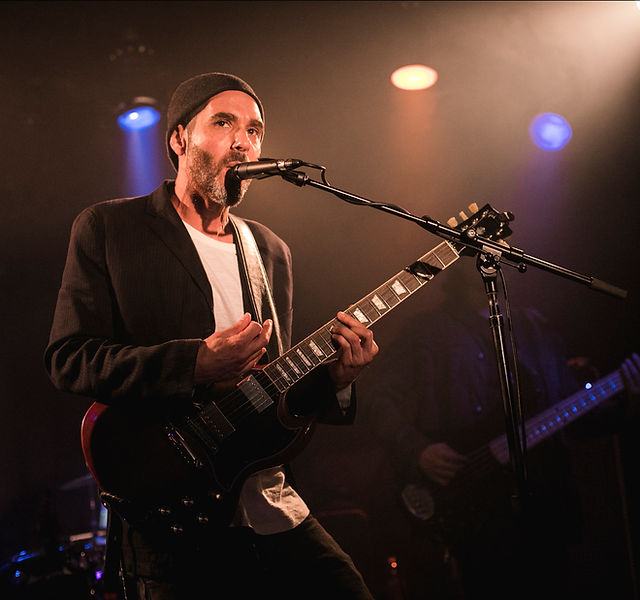

Kramon
Sounds like: A renowned television and film composer (Lethal Weapon, Veronica Mars) crafting melodically rich, sonically adventurous original pop that is reminiscent of Jon Brion’s work with Aimee Mann and Fiona Apple.
Interview:
Describe your approach to music and how you would explain your sound to others.
It’s a tough question because I’ve been listening to and studying so many genres of music over the years. This has been a huge asset for me composing music for TV shows and films.
But as an artist releasing my own music, it could be a challenge narrowing it down to a cohesive sound. For this Evolutions project I like the term dream pop. It helps describe the atmospheric/melodic elements in the songs. I think it also fits both Meredith Adelaide and Hunter Hawkins’ beautiful and emotive vocal styles.
How did you come up with the name of your act?
It’s my last name. But since I’m starting to collaborate more, I wanna have the freedom to release different kinds of projects with different people without it being associated with my name or my tv music from Veronica Mars, High Potential etc…. I’m also going to release a hard rock project and a soul pop project under the Kramon name.
But this Evolutions project wouldn’t have been what it is without collaborating with Meredith Adelaide and Hunter Hawkins.
What are some artists and albums that have informed your creative direction?
The scope is always super wide. But for Evolutions I would go back to some of the early 70’s pop and singer/songwriter music. Nick Drake (especially Bryter Later), Joni Mitchell, Sandy Denny, and a beautiful record called Bored Civilians by Keith Cross and Peter Ross. Not very well known and they only made this one record but it’s absolutely beautiful. Even though these artists didn’t use as much of the atmospheric/synth textures that are on “Evolutions,” the emotional and melodic tone of these artists were highly influential.
What’s the most exciting thing happening in music right now?
As far as production and pushing things forward creatively, I think Rap has had the advantage over the last 20 years even though that’s not what I’m doing. But I absolutely love the new Favors’ record and everything FINNEAS has been doing since he started making tracks with his sister.
He’s brought a lot of sensibilities from older music from the last century while also sounding contemporary and innovative.
On a larger level I understand the arguments for and against Spotify and streaming. But the beautiful thing about it is that now we all have the same record collection. So I find, as opposed to years ago, people are more open to different kinds of music from different eras since it’s all there in one place.
Where do you see the music world heading in the next five years?
I mean, with how fast technology is moving this is a really tough question. The fact that live music is thriving gives me hope that music made by real people will always be in high demand.
How is music helping you during these uncertain times?
Music has always been my rock and my sanctuary during hard times going back to when I was a little kid. As an only child, playing records in my room was my whole world. Now, more than ever, I find myself going back to music from the 1970’s. This was my favorite era growing up and I think that those records from that time really hold up. There’s a reason rap producers sample music from the ‘70s more than any other decade.
And when I’m immersed in recording or listening to music, time ceases to exist and I’m suspended in the infinite moment and the world just falls away. Which, like it or not, is something to be super grateful for these days.
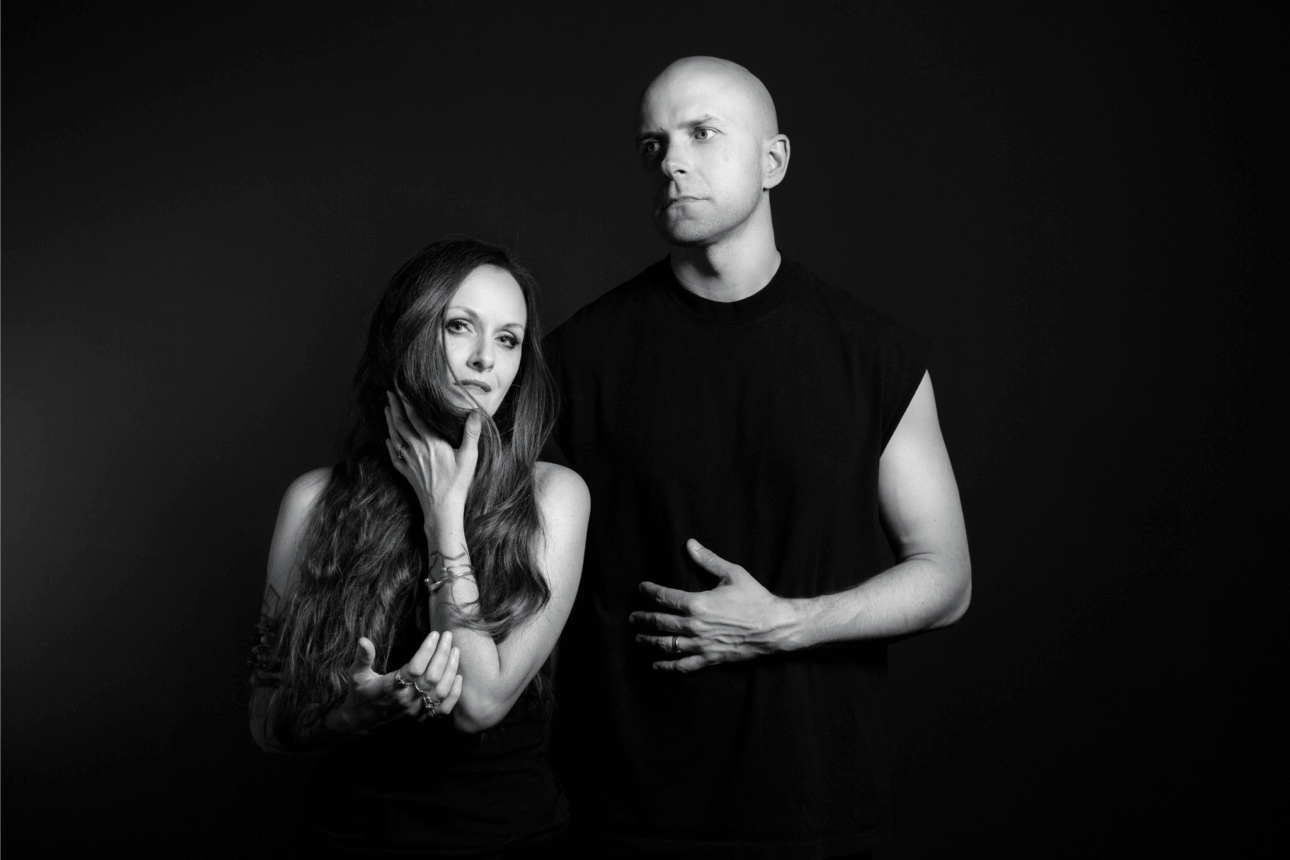

Friendship Commanders
Sounds like: What would happen if Shawn Colvin was backed by Soundgarden.
Interview:
Describe your approach to music and how you would explain your sound to
others.
Buick Audra: I’d say our approach is to make work about real experiences, people and dynamics — and to make it as loudly but also as artfully as possible. We are a two- person melodic heavy band, so we’re both doing quite a lot, on the records and in the live setting. We’re maximalists in that way, but we’re incredibly focused on delivering songs, as opposed to vibes. We’re like grungy, fuzzy, doomy pop- informed metal with very memorable hooks. Bold female vocals. Our new album BEAR casts a wide net, blending some of heaviest work with some of our more accessible songs.
Jerry Roe: We do seem to have our own style of heavy song that ranges from doomy to thrash/punk in a way, but the main ingredient is the volume and intensity with which we perform. We’ve been told we border on powerviolence-style energy and volume on stage, and it wasn’t really a decision, that’s just how it comes out. I feel like I’ve run three marathons after a show, and it takes a while to catch my breath. I love it!
How did you come up with the name of your act?
BA: We named the band after a vintage varsity jacket that I got at an antique market! It’s been my winter jacket for many years now. When we first named the band, we just liked the words together and that they didn’t sound so self-serious. But as time has gone on, we’ve ended up being a band that talks quite a bit about friendship—what it is, what it isn’t. So, the name fits.
What are some artists and albums that have informed your creative direction?
BA: Chris Cornell/Soundgarden (Badmotorfinger), Alice in Chains (Dirt), Shellac (At Action Park), Rickie Lee Jones (Rickie Lee Jones), Shawn Colvin (Fat City), Mariah Carey (Heartbreaker), The Breeders (Last Splash)
JR: Soundgarden is a big one for me much like Buick, but I feel like I bring a lot of what I took from bands like The Melvins, Crowbar, King Crimson, Mastodon and all the ‘90s metal I grew up on.
What’s the most exciting thing happening in music right now?
BA: People making work in the face of great uncertainty, and also without AI. Just doing it anyway. That’s what we’re doing! Don’t collapse. Make shit. Also, I think there’s cool stuff happening in jazz these days. The Bad Plus.
JR: Music feels like it’s in a weird spot honestly, but it does seem like there’s a groundswell of folks pushing against using non-linear editing in DAW’s, tuning, drum samples and in-the-box tones and amp sims. The music will benefit and stop seeming like one big, homogenized glob soon, I hope. Past that, I do love the band Car Bomb. They’re pushing the metal world towards great things, and I always get excited when they have new music out.
Where do you see the music world heading in the next five years?
BA: Honestly, I could see rock returning to the top. It’s honest, it can handle your anger, and it gives the energy somewhere to live. Rock and horror are sisters in that way.
How is music helping you during these uncertain times?
BA: Well, music always keeps me out of jail, because I get to make work about the confusion I feel almost all of the time. But it also reminds me that I’m a member of the world. Playing shows, touring, it really saves my life. I need to be in a room with a bunch of other weirdos. It’s what soothes my soul and reminds me to keep going with my primary purpose.
JR: Music is the only thing I really do and know how to do or want to do besides maybe video/visual art. Without it I’d be completely lost. Truly. So, there’s your answer.
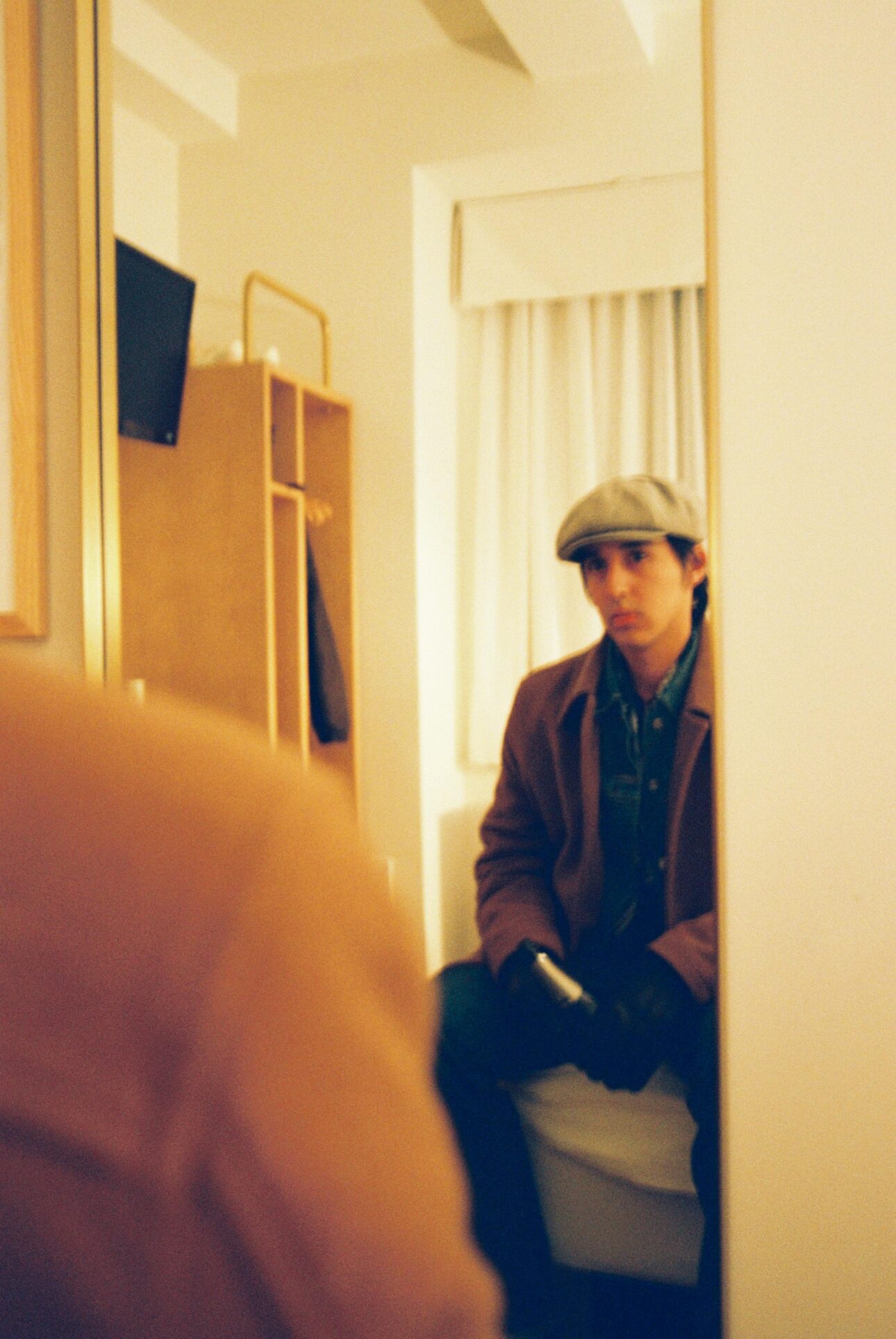

Ethan Pacheco
Sounds like: At just 21, Ethan Pacheco exhibits a maturity in his songwriting beyond his years, with an approach to lyricism akin to Jeff Tweedy or Paul Westerberg in its plain spoken approach and electric fervor.
Interview:
Describe your approach to music and how you would explain your sound to others.
My approach to music usually comes from being impacted by something, whether in my own life or through someone else’s experience. I try to understand where I am in the world and in my life, usually landing on a theme or idea I keep circling back to. From there, I write around those feelings. It’s an accumulation of influences: records, paintings, books, that all find their way into the tone of what I’m creating.
Feelings tend to hit me hard, sometimes for months, and then fade. When that happens, I have to remind myself where I was emotionally to finish what I started. That constant shift is inevitable and can be a challenge. My sound ultimately reflects what I understand at any given time.
I grew up in Red Oak, Texas, about 30 minutes from Dallas and just a few minutes from open prairie land, though that landscape has since been overtaken by urbanization. That gave me the best of both worlds, city culture and country influence. My mom loved The Smiths, my dad leaned more toward Eric Church.
I’d describe my sound as “architectural,” meaning I approach the creative process in layers. I’m not just a singer/songwriter; I take my own cover photos, I write beyond music, I paint. All of that feeds into the art. I also like “architectural” as a way of sidestepping strict genre labels. I’ve never really fit into one box. What makes me folk? Maybe it’s easier to just call it rock, and I’m okay with that too.
How did you come up with the name of your act?
I’ve always performed under my real name, but I imagine once the right feeling strikes, I’ll commit to a band name. In the past I’ve played around with ideas like Pacheco & The RoadRunners, which I’ve actually used, or The Paisanos, a slang term in Mexico for road runners.
What are some artists and albums that have informed your creative direction?
Wilco’s A Ghost Is Born hit me harder than anything I’ve ever listened to. It shaped my entire appreciation and hope for music, the composition, the lyrics, the playing. It’s perfect.
“Fill up your mind with all you can know, but don’t forget that your body will let it all go.” – Jeff Tweedy
Beulah’s Yoko struck me in a similar way. I’d never heard pedal steel guitar used like that, it was so exciting.
I also have to mention Jacob Chaney. We worked on a lot of this recent music together, and he’s been huge in pushing me creatively. He’s one of those guys who, if you ask him about any band, can trace it back through ten others that inspired it. We spent plenty of nights going down those rabbit holes.
What’s the most exciting thing(s) happening in music right now?
- My friends finding success in their careers
- The new Waterloo Records opening in Austin, TX
- More artists embracing platforms like Substack and Bandcamp instead of chasing short-form content
- Bruce Springsteen’s Electric Nebraska
- Johnny Blue Skies
- I Will Swim to You: A Tribute to Jason Molina
- La Lom
Where do you see the music world heading in the next five years?
I’m hoping for a kind of regression in technique, a step back from the obsession with streaming numbers and short-form content. I feel like I missed out on the music industry experience of the 2010s. I still buy CDs and vinyl; why can’t more people do the same?
That said, I do think people are catching on. I’ve noticed artists on big tours who only release their music through Bandcamp, or artists using Substack to connect directly with fans and offer patron-style support. That feels real to me.
So I see the music world shifting back toward more traditional ways of releasing and selling music, and I think that’s a good thing. It rewards artists who put in the work, not just the ones who get lucky off a 15-second clip on a Chinese app.
How is music helping you during these uncertain times?
Music helps me think about emotions and moments I might not normally confront, whether in my own life or through what my friends are going through. It grounds me. It lets me ask questions, build narratives, and either find answers or sit in the emotions that come with not finding them.
If I’m uncertain about something, I tend to overthink it. Music gives me a way to take those thoughts and put them into melody, rhythm, and words, turning them into something collective, something that communicates.
Lately I’ve found it funny that I don’t listen to much current music. Instead, I keep returning to the same albums over and over. They become my classics, the ones that help me figure things out no matter what season of life I’m in. Or maybe it’s just because I’m chasing one sound that won’t let go, haha.
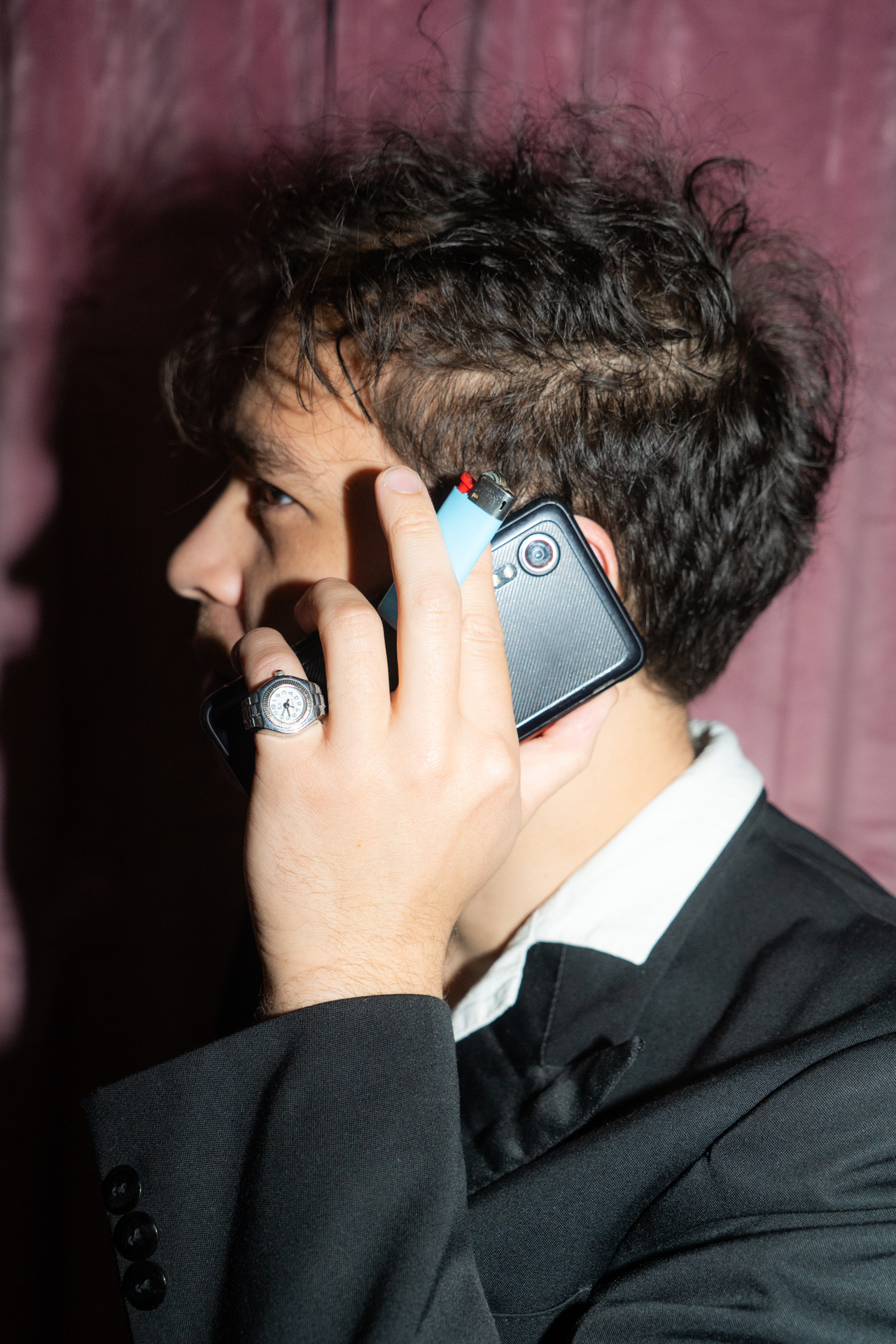

Lucian Moriyama
Sounds like: Dark, gothic crooner vibes bathed in ghostly pedal-steel and This Mortal Coil-esque atmospherics.
Interview:
Describe your approach to music and how you would explain your sound to others.
“How do you pay the rent in heaven?” is country gone wrong. Slowed way down, crying in a cocktail glass. You’ve lost your cufflinks and your last good excuse. The foie gras is cursed. The steel guitar is like an olive skewer to the heart. It has such a beautiful sound, like a string trio — but on a cruise to Hawai’i. I like exaggerating the off-ness of the notes, like the blue note of jazz, adding some suspension, unsettledness, or harmonic disbelief. The furniture is moving. My next single is about the background music I keep hearing: jazzless horns.
How did you come up with the name of your act?
My parents met at a nightclub in Honolulu in the late 80s/early 90s.
What are some artists and albums that have informed your creative direction?
Commit to the bit: 69 Love Songs by The Magnetic Fields, or the fake live cabaret album The Ultraconformist by Momus. Leonard Cohen eating a banana. Luke Schneider’s Survey of Modern Pedal Steel, with tracks by Jonny Lam among others, really drew me into the orbit of the pedal steel. And MJ Lenderman’s “Under Control,” with Xandy Chelmis on steel, is a perfectly confused country song. I always go back to This Mortal Coil. It’s proto-Lynchian, an encyclopedia or grimoire of forlorn folk singers.
What’s the most exciting thing happening in music right now?
In the punk-is-dead, post-Tiesto world, Kabareh Cheikhats is the music your parents warned you about. I’ve been obsessed with “Is It Cold In The Water?” by Moses Sumney / ANOHNI since it came out last year. Someone finally spilled their drink on the club/trap drum machine and left us this sublime soul song from the future. I saw NAIMA in NYC last year and it filled the Sade-shaped hole in my heart. If I still had a car, I’d be stuck in traffic listening to Aaron Edgcomb’s Centripetal Grid Myth.
Where do you see the music world heading in the next five years?
Two factions emerge: TikTok-sized songs made for stream-maxing and the resistance fronted by Jesse Welles, armed with his acoustic guitar and 3 dangerously long minutes. Fortunately, there are signs of life on other planets: the new Voyager Golden Record sounds very different; AI-bubbles burst; the final Champagne Supernova tour. All those moments will be lost in time, like shellac beetles on vinyl.
How is music helping you during these uncertain times?
I have to remind myself that I’m here because I care about art and music, not to scroll on my feed. Whenever I get an idea like “Is music going the way of poetry?”, I put on something comforting like “Wood Knot” by Dutch Interior and switch off. It usually does the trick.
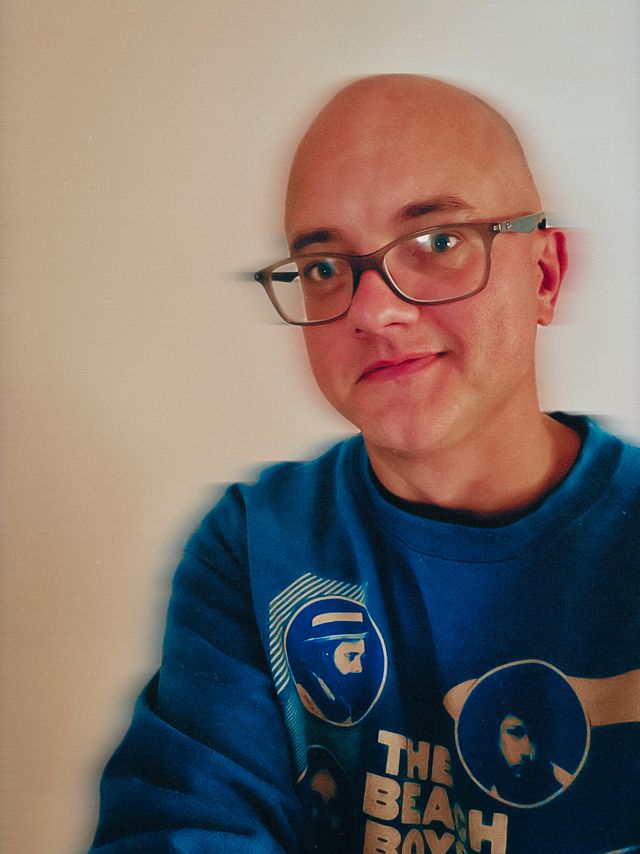

Sean Moore
Sounds like: Even though it lasts for just under two minutes, “I Reveal” contains pop craftsmanship that took a lifetime to hone. One can clearly hear the influences of The Blue Nile, Nick Drake and Van Dyke Parks alike in his arrangements.
Interview:
Describe your approach to music and how you would explain your sound to others.
When writing songs, I am always searching for the unheard melody, chord progression, arrangement, and lyric. If the combination of ideas makes my head tilt, I know I’m on to something. I have been fine tuning my solo music since 2007 with the release of my debut album, Signs of Potential Life. There is a strong classical influence in the instrumentation and arrangements, having received formal training on the violin and French horn from a young age. The sound of my solo music evokes Elliott Smith, Nick Drake, Sufjan Stevens and The Beach Boys.
How did you come up with the name of your act?
Sean Moore is the name given to me by my parents. I lost my father in 2003 and my mother 10 years later. I think of them often. They were beautiful people who cared deeply about me. They were responsible for initiating my first violin lesson at the age of 5. They never missed a performance. I am forever grateful and proud to carry on their name.
What are some artists and albums that have informed your creative direction?
My mother had a copy of Best of The Beach Boys Vol. 1 on cassette. I vividly remember seeing the front cover of Brian, Dennis, Carl, Al, and Mike in the studio singing into microphones and thinking…this is exactly what I want to do with my life. Pet Sounds, Sunflower, and Love You have been mainstays throughout my 20’s and beyond. Nick Drake is also highly influential to my songwriting and arrangements, particularly Bryter Layter. The marriage of finger-picked guitar, chamber pop stylings, and string arrangements are a common thread on my new solo album, The Silent Architect.
What’s the most exciting thing happening in music right now?
We are living in a time where you can access almost everything. Obscure records are re-emerging and finding an audience. Discovery has never been more accessible than it is right now. What a time to be alive.
Where do you see the music world heading in the next five years?
I think the advent of AI-generated music will start to phase out some of the cookie-cutter artists prevalent in today’s pop music. Creatives on the cutting edge of music and sound should be able to stay one step ahead of AI and potentially reach a larger audience. Additionally, I hope artists continue to take a stand and demand fair pay from the streaming giants. These corporations are nothing without us. We should be compensated for our contributions.
How is music helping you during these uncertain times?
Music has been my solitude for the majority of my life. I can’t remember a day that hasn’t been colored in some way by the music I listen to or write. I used to be completely consumed with current events and eventually realized the paralysis it caused me. I am only here on earth for a brief moment and control next to nothing. I want to create something lasting that influences the culture surrounding me.
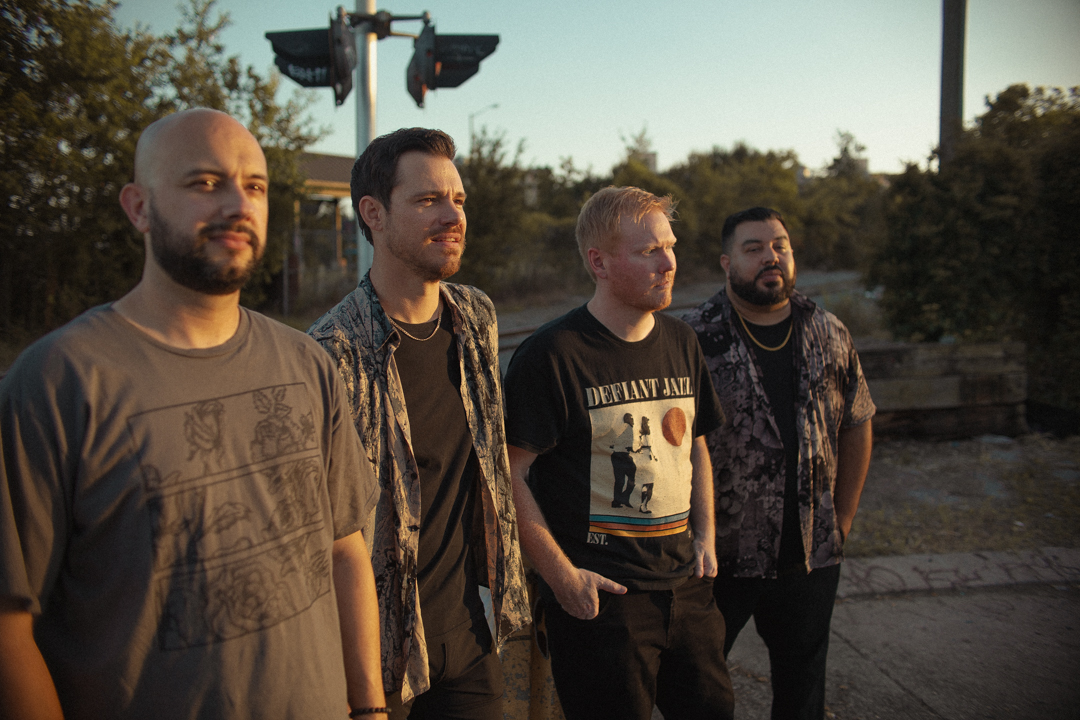

Safety Training
Sounds like: A band who blends impassioned R&B sentiments with crushing emo-metal structures to create a powerful and catchy combination.
Interview: (Answers by vocalist Nick Rhodes)
Describe your approach to music and how you would explain your sound to others.
Honestly, we are all generally happy people nowadays. That can get tricky some days writing sad songs, so a lot of times we are pulling from past experiences or really trying to write something we know someone might be going through. Our approach / goal is to write a song that connects with people and that might help get them through whatever they are going through. That is what music has done for us over the years and that means everything to us.
I would describe our sound as emo / alternative rock with an R&B twist vocally where none of the songs sound the same.
How did you come up with the name of your act?
So we were out of ideas that were not already taken, so I started reading off episode names from my favorite show, The Office. Safety Training stuck out because that episode is about dealing with depression so it just made sense for an emo band. We see the name as “Safety Training” for dealing with difficult situations in life and dealing with your emotions.
What are some artists and albums that have informed your creative direction?
We all have roots in Hardcore, Post-Hardcore, Emo, and even Deathcore. I would say some past influences are a wide range from Comeback Kid, Poison the Well, Thrice, Misery Signals, The Story So Far, Underoath, A Day To Remember, Coheed and Cambria, the list could go on. I don’t think we have one album that is driving the direction, as you will notice most of our songs sound different. I think you are getting a melting pot of variety that is bleeding through. I will say The Early November’s The Room is Too Cold was an album I have listened to more than anything else. That CD was stuck in my car for years and I could not eject it. Great album. -Nick Rhodes
As far as current music goes we are all listening to a lot of Bilmuri and Movements lately.
What’s the most exciting thing happening in music right now?
I think the most exciting thing happening in music is the resurgence and demand for “guitar music.” It dominated the charts back in the early 2000’s, but I think the gatekeeper mentality turned people away from pop punk and metal music for a while and we are seeing more people dropping ego and enjoying songs that resonate with them more. It needs to be good live, tone matters, but I don’t want to watch an hour long video of someone critiquing the guitar player’s tone especially if it’s a great song. Solo acts generally dominate billboard charts, but it’s exciting to see a lot of bands coming out now and being incredibly successful in the emo, metal, and hardcore scene like Knocked Loose and Turnstile.
Where do you see the music world heading in the next five years?
Technology makes that difficult to answer because we will still be carrying around phones 5 years from now. That said, I don’t see streaming going anywhere. We have seen an increased demand for physical media and I think that will continue because people want to support art. I think there is also something to be said about making an event out of putting on an album on vinyl and listening intentionally. It’s much more difficult to skip over a song.
I know the looming question in the music world is how does AI impact music in the years to come. AI will continue to get more difficult to distinguish from human creation. I think there is an opportunity there. If it does continue to oversaturate more, it will just drive the demand for people to go see music live to find what is real. It’s human nature for people to want to connect with the artist.
How is music helping you during these uncertain times?
As we all know the world is becoming more and more divided and politicized. I think music draws people together that are from many different walks of life. It creates conversations and relationships you would have otherwise never had and I think that is the beauty of music.
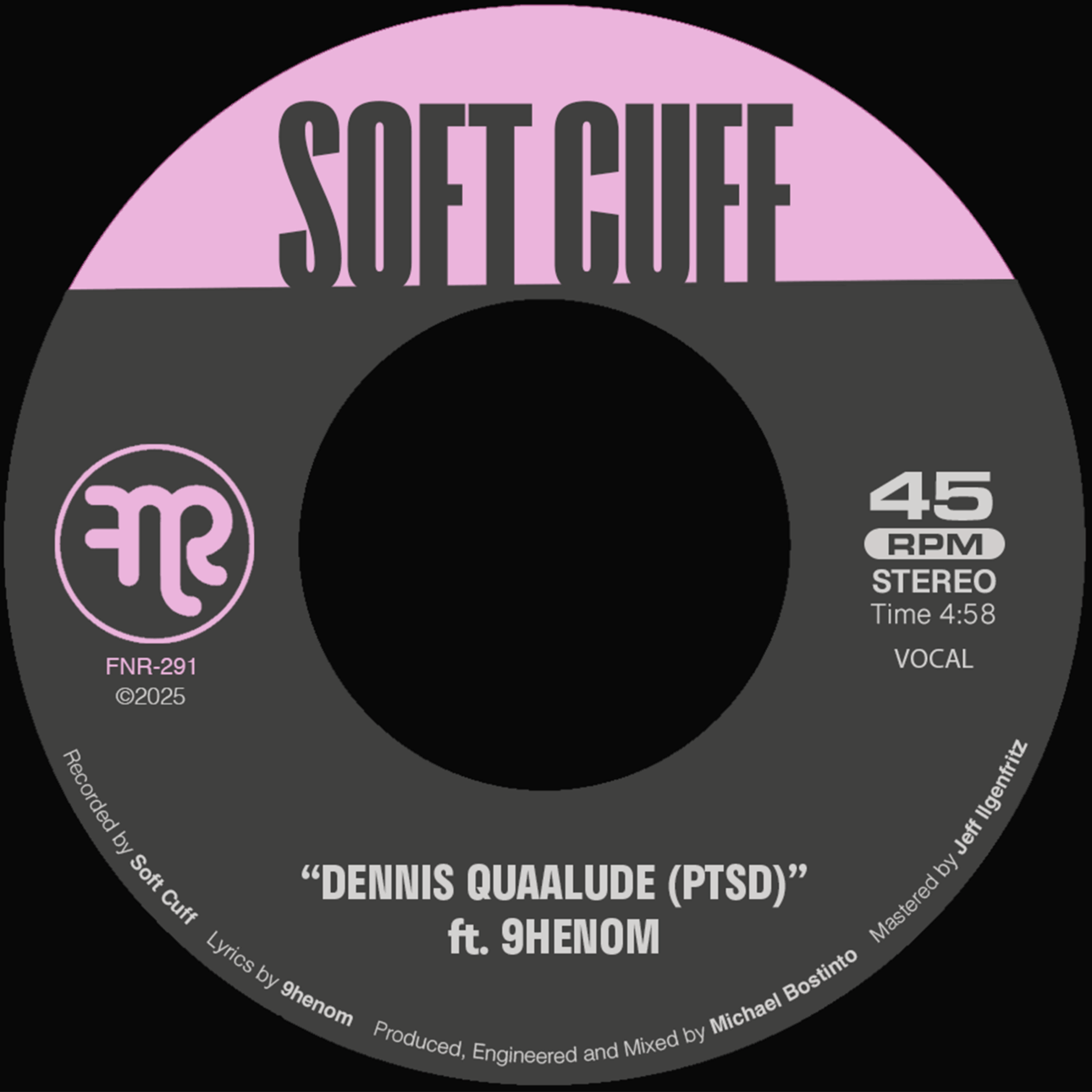

Soft Cuff
Sounds like: Fantastic blend of true MC’ing and psychedelic instrumentation, where one can hear elements of Tame Impala, Fishbone and The Roots in a seamless groove.
Interview: (All answers from drummer Mikey Bostinto)
Describe your approach to music and how you would explain your sound to others.
Our approach is pretty simple…”does it groove? “Would we listen to this?” “What rapper or vocalist would sound dope over this?” Everything happens organically in the room together and most ideas start off as just freestyling. If we’re all smiling and bobbing our heads we’ll pursue the idea to completion. If I had to explain our sound to others….the shortened version would be “cinematic psych-groove.” We definitely lean into psychedelia with big hip hop influence.
How did you come up with the name for your act?
The name actually came from those things you slip over your arm to measure blood pressure. My girlfriend was going in for surgery and she had one of those on and it said SOFT CUFF in gold foil and I just thought it looked and sounded cool.
What are some artists and albums that have informed your creative direction?
You’ll hear major influences from bands like Surprise Chef, Karate Boogaloo, Badbadnotgood, El Michels Affair, Adrian Younge, Khruangbin; etc. A lot of soul, funk, psych and hip-hop.
What’s the most exciting thing happening in music right now?
Australia has been having a great moment, a lot of our favorite bands are from down under. Also everything the Alchemist has been collabing on and putting out is insanely good. Same with El Michels Affair. Independent record labels like Colemine/Karma Chief, Big Crown, College of Knowledge, Funk Night, Eraserhood, and G.E.D Soul are putting out some of the best music right now!
Where do you see the music world heading in the next five years?
Hopefully back to people playing instruments and making music with substance. AI is running a muck in the industry and it’s gross. It’s not creative, lacks substance and is soulless. And the thing that is troubling, is that a lot of people don’t even know when they’re listening to AI music. Spotify has so many of these AI artists sprinkled into the playlist people have on in the background to avoid showcasing and paying real artists, and people have no idea. So I HOPE people will want real art made by real people.
How is music helping you during these uncertain times?
Good music and art is sometimes the only thing that can bring any light into this dark, scary, violent, hateful and bleak world we’re currently living in.
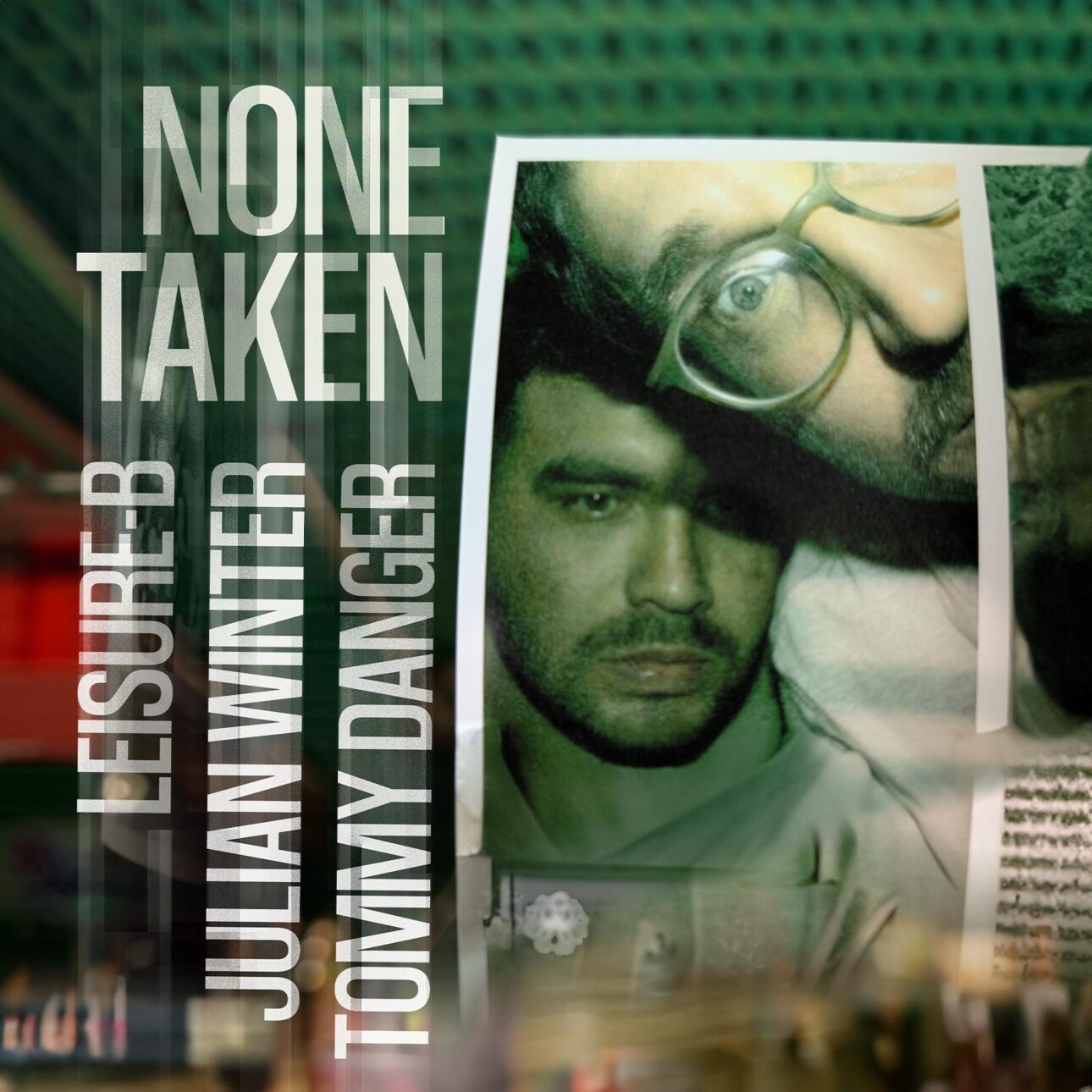

Julian Winter, Leisure-B and Tommy Danger
Sounds like: I love this combination of Lyricist Lounge era MC’ing, atmospheric guitars and snapping beats that incorporate this collaboration. It’s like a grounded ambience that reminds me of a lot of great underground hip-hop in the late 90s/early 00s.
Interview: (conducted by rappers Tommy Danger and Leisure-B)
Describe your approach to music and how you would explain your sound to others.
Tommy Danger: My approach to music is rooted in capturing a response to sounds that inspire me in the moment. If for example a beat sparks something inside of me, I respond with whatever emotion or story is sitting in my chest. I mostly use my songs to share personal experiences or just to hype myself up. Ultimately, I just want the listener to feel something genuine. My sound has been described by others as a modern day mesh of Qtip and Mase.
Leisure-B: To me making music is all about impulsively being able to express myself through sound. This doesn’t mean that I randomly want to create noises, but rather to be able to record an idea as fast and accurately as possible, so I get as close to the core of it as I can. This approach makes the music I make quite versatile, even though it can still be contained within the urban style range of music.
How did you come up with the name of your act?
Tommy Danger: The name Tommy Danger — The Now and Laterman tells my full story. “Tommy Danger” came from the fire I used to carry inside — anger I didn’t know how to express. I wasn’t the type to talk things out — I’d break things or shut down. But over time, I learned to channel that danger into discipline, art, and purpose. I kept the name to remind myself where I came from and how far I’ve come.
The Now and Laterman was born from a life of delayed gratification and hard lessons. I’ve always believed what you do now echoes into your future—but you also have to savor the moment. That candy, Now and Laters, was my favorite as a kid. It reminded me to stay connected to my inner child, to keep joy alive in the grind. The name became a symbol: hustle now, enjoy the sweetness later, and never forget why you started.
Together, my name represents a man forged in pain, refined by purpose, and living between the grind and the grace.
Leisure-B: I used to play Leisure Suit Larry a lot, and I thought the adjective Leisure had a smooth ring to it. Also it is my favorite kind of time.
What are some artists and albums that have informed your creative direction?
Tommy Danger: I’m rooted in classic hip-hop but my sound stretches across eras and emotions. Jay-Z taught me how to evolve — not just as an artist but as a man navigating life with strategy and purpose. Kanye reminded me that even if your voice is misunderstood, it can still shake the world. Tyler, The Creator gave me the freedom to be bold and unfiltered, while Kendrick Lamar sharpened my storytelling — deep, intentional, and raw.
Albums like Illmatic by Nas, My Beautiful Dark Twisted Fantasy by Kanye, good kid, m.A.A.d city by Kendrick and The Blueprint by Jay-Z laid the foundation. But so did Alfredo by Freddie Gibbs, 12 by Westside Gunn, and anything by LaRussell — projects that remind you what it means to be honest, hungry and fearless in your art.
Leisure-B: Ray West – LUV NY, Flying Lotus – Los Angeles, Digable Planets – Blowout Comb, Kacceta – Я по улице иду
What’s the most exciting thing happening in music right now?
Tommy Danger Right now, the most exciting thing in music is the shift back to real connection. Artists are breaking down walls—going direct to their fans, creating without permission, and showing the process as much as the product. We’re watching mixtape culture evolve again, but this time it’s digital, visual, and interactive.
Ownership and authenticity are winning. Artists are building tribes instead of chasing trends. People want more than songs — they want meaning, energy, and community. And that’s the lane I’m in.
Leisure-B: I feel this question is a bit depressing. Not because there’s nothing cool happening, but because the amount of “not so cool” stuff has increased significantly. Personally, I’m excited about a lot of stuff that’s coming from Russia. Even though I don’t understand most of the lyrics, production wise there’s some awesome things happening there in the hip-hop and electronica genres, and I take a lot of inspiration from it.
Where do you see the music world heading in the next five years?
Tommy Danger: In five years, music will be more intimate and experience-driven. Fans won’t just stream songs — they’ll join movements. It won’t be about numbers — it’ll be about depth. The ones who last will be the ones who build with intention, who give their audience something to feel, not just consume.
I see music blending more with lifestyle, wellness, and storytelling. More artist-owned platforms, more exclusive content, more digital collectibles, and physical drops that feel like artifacts. That’s why I do limited edition mixtapes, NFC keychains, bundled merch — because I want supporters to feel part of something personal and timeless.
Leisure-B: As multifaceted the term “music world” used to be, it still seemed like a coherent entity. With the rise of AI however, I feel that we’re at the point of a schism in this terminology. The music world of AI I think will be doing pretty awesome, the music world of real musicians is going to get hit pretty hard, if only the fact that it will be much harder to get noticed when AI will produce a huge amount of output. I think real musicians will need to depend even more heavily on live performances, and a lot of composers will be losing their jobs. Happy Thoughts!
How is music helping you during these uncertain times?
Tommy Danger: Music is my therapy, my mirror, my release. Since losing my wife, Grace, music has been the only place I can speak without holding back. I cry in the booth. I pray through lyrics. I scream through beats. I heal in melodies.
It’s how I process grief, how I stay grounded, and how I keep moving. Some days I write just to survive. Other days I write to inspire. But every time, it brings me back to myself. In a world full of noise and uncertainty, music is where I find clarity — and where I give it to others.
Leisure-B: Music has always helped me during all uncertain times, by being there for me, offering me a mirror as well as lending me an ear. It’s one of the few things in life that has never disappointed me.
Groover connects independent artists with music industry professionals to accelerate their careers. Their goal is to empower independent artists by providing a platform that connects them with the best curators, radio, media, labels and other music pros to receive guaranteed feedback and exposure.
Over 600,000 artists use Groover to connect with 3,000+ professionals across the globe. Artists have received over 6M+ pieces of feedback, 1M+ shares (e.g. playlists, reviews) and 1,500+ label contracts — all thanks to Groover!

